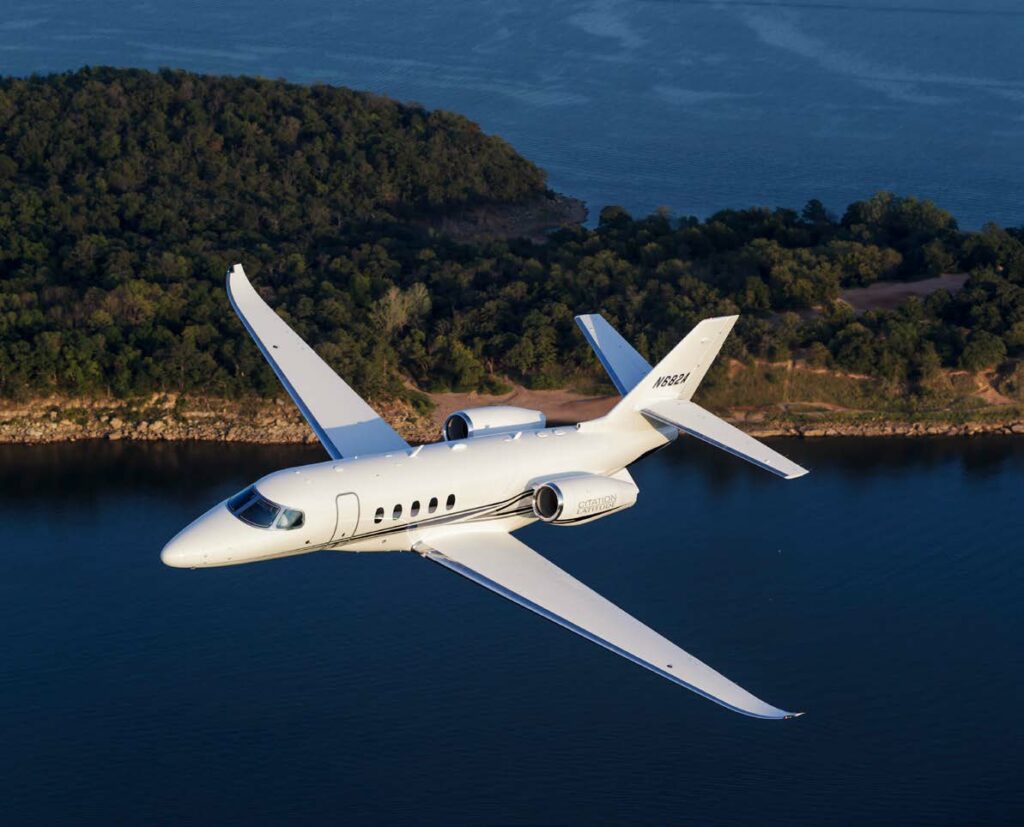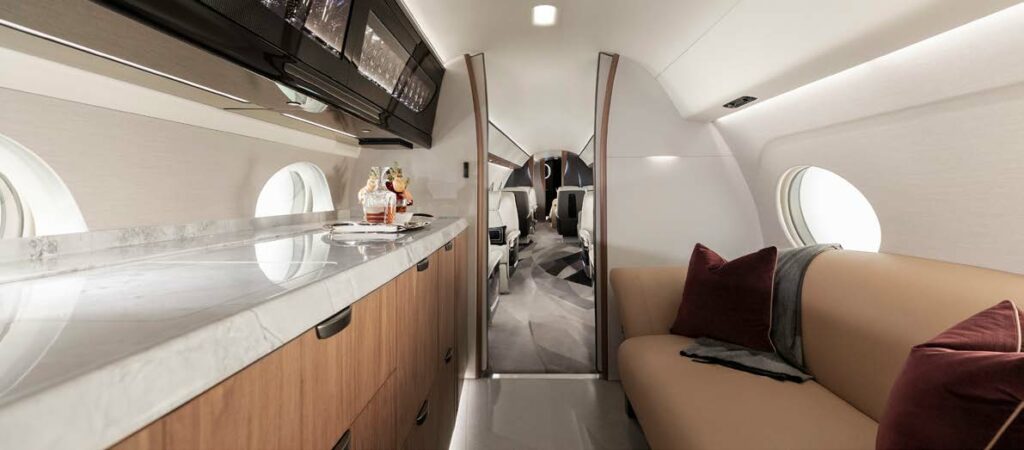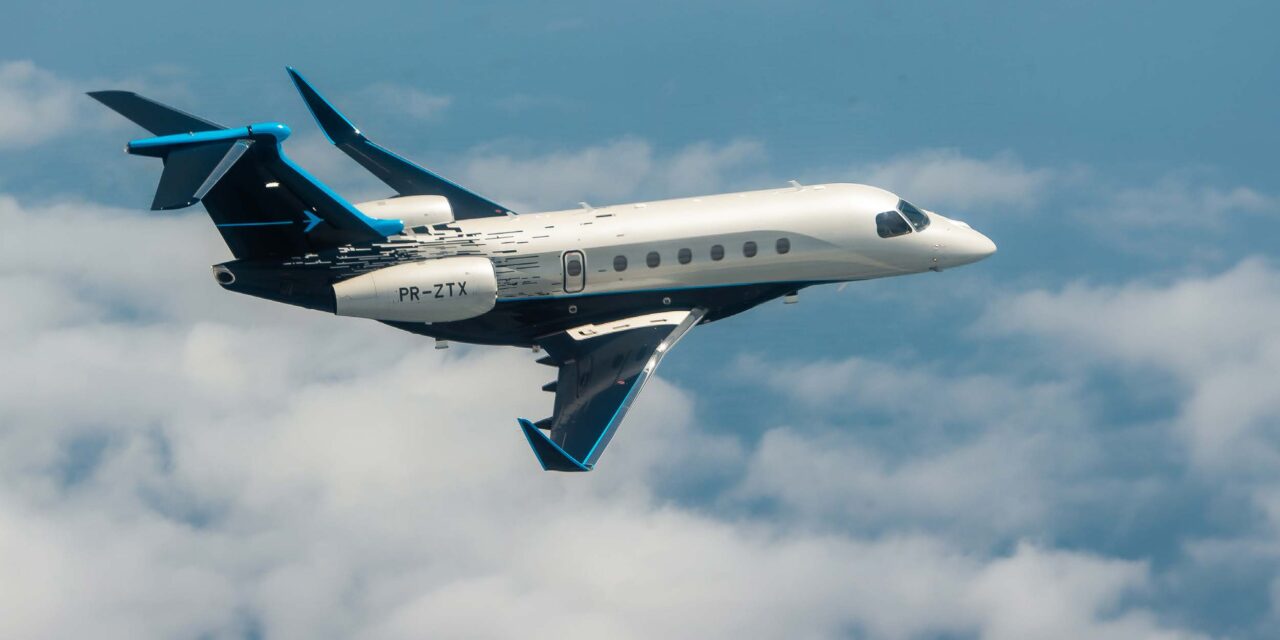By Nick Copley, President, SherpaReport
© Embraer – Textron – Gulfstream
The global demand for business aviation continues to be higher than before the pandemic. Fractional aircraft ownership has emerged as an attractive option for individuals and businesses seeking the luxury and convenience of private aviation without the full cost and responsibilities of owning an entire aircraft. Fractional ownership involves purchasing a share of an aircraft, which entitles you to a set number of flying hours each year, typically ranging from 50 to 400 hours, depending on the size of your share and the specific aircraft type. It is an excellent option if you fly privately for at least 50 hours a year. You can buy a share of a turboprop, a light jet or an ultra-long-range jet – or anything in between. This type of ownership allows you to enjoy the benefits of flying privately while leaving the management of the plane, including crew sourcing, scheduling, cleaning, positioning, and much more, to the fleet operator.

To make informed decisions about fractional ownership, it’s crucial to consider various factors. Here are the top 10 considerations when purchasing a fractional aircraft share:
1. Is fractional ownership the right product?
Based on one’s flying profile, it may be that chartering, using a jet card or purchasing a plane outright is more appropriate. A full analysis of one’s current and expected flying wants and needs should be undertaken.
2. What kind of aircraft?
Narrow down the operators by selecting those that have the types of plane wanted, then conduct a comparative analysis of those. In most cases with large operators, one can upgrade or downgrade for a particular trip if a larger or smaller plane is needed.
3. Which fractional operator is best?
Narrow down the operators by selecting those that have the types of plane wanted, then conduct a comparative analysis of those. In most cases with large operators, one can upgrade or downgrade for a particular trip if a larger or smaller plane is needed.
4. What are the real costs?
Understand the pricing model (different operators have different models), including acquisition costs, monthly management fees (which usually cover crew salaries, maintenance, insurance, etc.), hourly rates, and additional costs (fuel surcharges, de-icing, specific catering needs, etc.). Ask for quotes. There are often things one can ask for that are outside the norm of a standard contract.
5. How old are the operator’s aircraft?
When considering which operator to choose, look at the age of its aircraft and inquire about service and safety standards (most providers do a good job on safety). Smaller providers may have older aircraft (but may charge less). Bigger providers likely offer newer aircraft.
6. What is the share’s resale value?
It’s always wise to prepare for divestment, if necessary. Understand the potential resale value of the fractional share and any restrictions or conditions related to resale.
7. Do the aircraft have enough connectivity?
Whether using the aircraft for business or pleasure, check that the connectivity solutions are enough for your needs.
8. Is the fractional share available?
Providers may have waitlists. Many operators will offer a mechanism to alleviate the wait, e.g. by using their card programs, but if the delay is an issue, then it’s part of the consideration set.
9. What are the tax implications?
If the aircraft is for business use, in the United States and likely elsewhere, the capital costs can be deducted as a business depreciation expense. The tax implications are very complex, so it is imperative to consult a good financial advisor.
10. What do you need to be conscious of… and are there added benefits?
Be aware of any terms that may affect the aircraft’s usage, such as longer notice periods during peak demand. As a plus, though, some providers may offer lifestyle benefits such as tickets and member parties at the Super Bowl, Masters Tournaments or Formula 1 races, and unique art or wine travel packages.
There is a plethora of considerations when looking to invest what is likely millions of dollars in fractional aircraft ownership. Making an informed decision involves thorough research, consultations with aviation experts, and a clear understanding of your travel needs and preferences. By considering at least these 10 factors, individuals and businesses can navigate the complexities of fractional ownership and enjoy the benefits of private aviation.

For nearly 20 years, SherpaReport.com has been a comprehensive, independent source for in-depth information to help people and businesses make informed decisions about buying a private aircraft or investing in alternatives such as fractional ownership, jet cards and/or charters. News, analyses, and reports are constantly updated on the site, while more in-depth resources and one-on-one communication with President Nick Copley are available to site members.









